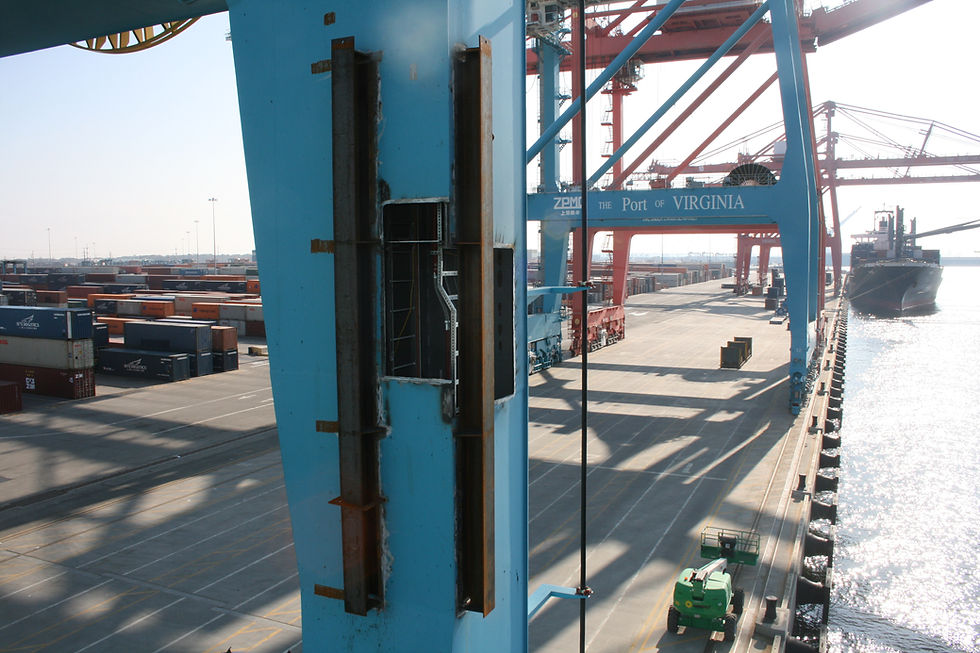Five Key Factors to Consider When Choosing a Ship-to-Shore Crane
- hrudd0
- Jun 25, 2024
- 2 min read

When it comes to efficient cargo handling at ports, choosing the right ship-to-shore (STS) crane is crucial. At Global Rigging and Transport, we understand the importance of optimising port operations with the best equipment. Here are five key factors to consider when selecting an STS crane:
1. Crane Capacity and Lifting Height
Why It Matters:
The capacity and lifting height of an STS crane directly impact the type and size of vessels it can handle. Ports need cranes that can efficiently manage the largest ships in their expected traffic.
What to Consider:
Maximum Load Capacity: Ensure the crane can handle the heaviest containers and cargo types you expect to process.
Lifting Height: Verify that the crane can reach the topmost containers on stacked vessels. With the increasing size of container ships, higher lifting capabilities are often necessary.
2. Operational Speed and Efficiency
Why It Matters:
Speed and efficiency are critical for maintaining a fast turnaround time for vessels, reducing port congestion, and increasing overall productivity.
What to Consider:
Hoisting Speed: Faster hoisting speeds improve loading and unloading times.
Trolley Speed: Quick horizontal movement of the trolley reduces cycle time.
Automation Options: Consider cranes with advanced automation and remote operation features to enhance efficiency and reduce human error.
3. Durability and Maintenance Requirements
Why It Matters:
STS cranes are significant investments, so durability and ease of maintenance are crucial for maximising their lifespan and minimising downtime.
What to Consider:
Build Quality: Look for cranes made with high-quality materials and robust construction.
Maintenance Accessibility: Cranes should be designed for easy access to critical components for routine maintenance.
Supplier Support: Choose suppliers known for excellent after-sales support and readily available spare parts.
4. Environmental Impact and Energy Efficiency
Why It Matters:
With increasing environmental regulations and the push for sustainable operations, energy-efficient and eco-friendly cranes are more important than ever.
What to Consider:
Energy Consumption: Opt for cranes with energy-efficient motors and systems that reduce power usage.
Emission Levels: Ensure the crane complies with local and international emission standards.
Green Technologies: Consider cranes equipped with regenerative braking systems and other green technologies that minimise environmental impact.
5. Cost and Financing Options
Why It Matters:
Balancing the initial investment with long-term operational costs is essential for financial planning and sustainability.
What to Consider:
Initial Purchase Price: Assess the cost of the crane relative to its features and capabilities.
Total Cost of Ownership: Factor in operating costs, maintenance expenses, and expected lifespan.
Financing Options: Explore various financing and leasing options to manage cash flow effectively.
Choosing the right ship-to-shore crane is a strategic decision that can significantly affect port operations and efficiency. With the right crane, ports can improve their operational efficiency, reduce costs, and contribute to a more sustainable future.
If you would like to find out about the crane services we provide at Global Rigging and Transport, please contact: d.close@globalrigging.com
GRT has offices in Virginia (US), Vancouver (Canada), San Antonio (Chile) and Panama City (Panama), enabling our capacity to meet the needs of global clients quickly and efficiently.
Photograph by Andy Li





Comments